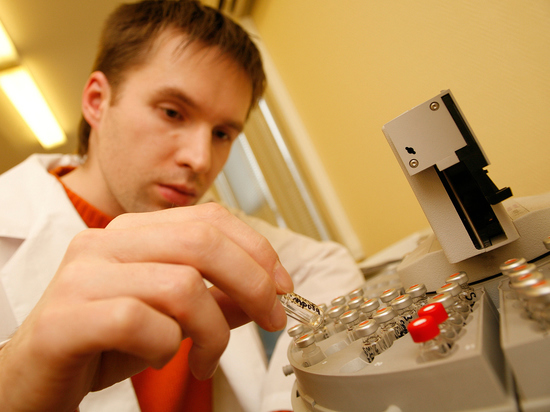Russia loses 15 Olympic medals after rechecking doping tests
[ad_1]

The International Doping Testing Agency (ITA) confirmed 21 cases of anti-doping rule violations by Russian athletes at the London 2012 Olympic Games. The result of rechecking samples was announced: Russia lost 15 medals. Now the agency will continue re-checking Sochi-2014, and then everywhere.
The team returned from Olympic London, winning 24 gold, 25 silver and 33 bronze medals. Then Russia took fourth place in the unofficial medal standings, behind only the teams of the USA (46-29-29), China (38-27-22) and Great Britain (29-17-19). Over the past ten years, medals have already been taken away from our athletes, athletics have suffered the greatest losses (Maria Savinova, Ivan Ukhov, Sergey Kirdyapkin, Natalya Antyukh, Yulia Zaripova, Tatiana Lysenko, Elena Lashmanova lost gold).
How long are samples kept?
The World Anti-Doping Code has set the current statute of limitations for reanalyzing the samples themselves at ten years.
What kind of organization conducts the recheck and who orders the new procedure?
The ITA was created by the International Olympic Committee in March 2017. And in November 2018, the agency, on behalf of the IOC, began rechecking doping samples taken in London 2012.
In general, the IOC began to engage in re-analysis of samples as part of the Olympic anti-doping program since the Olympic Games in Athens 2004, then there were Turin 2006, Beijing 2008, Vancouver 2010). So the Games in London have already become the fifth, subjected to additional control after a long time. The IOC itself began reviewing the London Games even before the creation of the ITA. And then all the reanalysis programs were transferred to a new expert body “for independent review.”
Did you only check samples of Russian athletes in London 2012?
In total, the agency tested 2727 samples, the countries are different. 73 anti-doping rule violations were found, 46 medals were redistributed (eight gold, 16 silver and 22 bronze), 31 awards were withdrawn. In weightlifting, 22 medals were redistributed, 18 in athletics, 4 in wrestling, 2 in rowing and canoeing.
Russia accounted for 21 violations, which led to the cancellation of 15 medals. Belarus has 11 medals, Ukraine has lost 7 awards.
What is a reanalysis and after how many years can it be done?
The ITA itself explains it this way: “Reanalysis programs provide an additional layer of anti-doping action and enhance the ability to detect possible rule violations beyond the first analysis after sampling.” That is, the years go by, new methods for detecting doping and new information pointing to a violation appear.
For example, “cases identified and authorized under the London 2012 reanalysis program were primarily related to anabolic steroids identified using the new ‘long-term metabolite (LTM) test’, an analytical method that was not yet available at the time of the initial sample analysis in 2012”.
It is this method of detecting anabolic steroids that has led to additional positive results: most of the 73 anti-doping rule violations associated with the reanalysis program are related to it.
And, by the way, it was this method that was presented to the world by Grigory Rodchenkov, then head of the Moscow Anti-Doping Laboratory.
“Scammers should never feel safe: not now, not tomorrow, not ten years from now. We will continuously improve our ability to fight doping from every possible angle, this is the determination and mission of the ITA, ”the agency quoted ITA CEO Benjamin Cohen as saying.
Are they only testing samples taken at the Olympic Games?
The IOC talks about expanding the scale of re-tests, and there is also financial support – a special fund of about $ 5 million. The ITA says it has launched a “large-scale long-term storage and reanalysis program for samples in 2020.” And set up a Single Long Term Storage Facility (CLTSF) by developing the necessary logistical strategies to store more than just samples taken during the Olympic Games. They now also include samples “collected at a significant stage during the months leading up to the competition, under the direction of all anti-doping organizations involved in testing before the Games.”
This strategy has already begun to work before the last past Games – in Tokyo 2020 and Beijing 2022.
What’s next?
The ITA is now set to complete the Sochi 2014 Winter Olympics sample reanalysis program. “Part of this has already begun with the IOC reanalyzing all samples taken from Russian athletes before the creation of the ITA. Re-analysis of samples collected during the Rio 2016 Games will begin at a later date.” Why later? To be able to “apply any new scientific or analytical methods.”
Ten years after London 2012, the samples that were stored will now be destroyed. Does this mean that there will be no new losses during this stage? Unfortunately no. Because there is the infamous electronic database of the Moscow Anti-Doping Laboratory (LIMS), according to which our athletes continue to lose medals. And here the period of checks and rechecks can be stretched indefinitely: there is no analysis, but there is data.
This is how Natalya Antyukh most recently lost her medal from London. The independent body for the fight against negative phenomena in athletics annulled the results of the 2012 Olympic champion in the 400-meter hurdles just after rechecking the database of the Moscow Anti-Doping Laboratory.
[ad_2]
Source link









